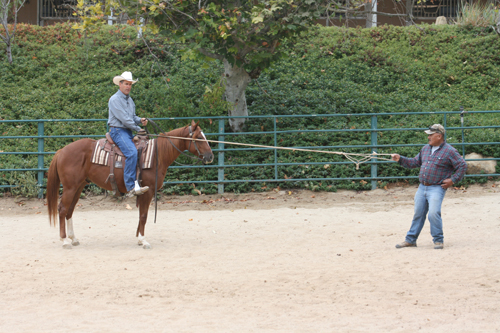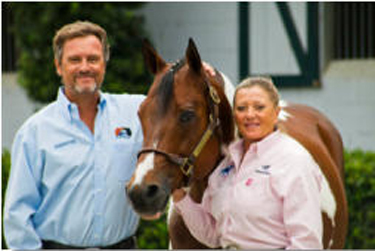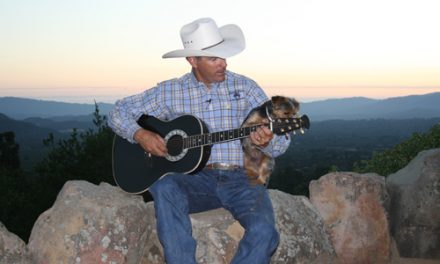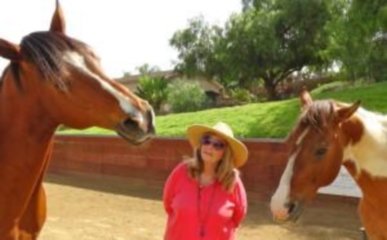PERFORMANCE HORSEMANSHIP WITH RICHARD WINTERS

With help from a friend, you can safely simulate a pull on the rope and build the horse’s confidence
Last month we discussed how to prepare and desensitize your horse to a lariat rope. With that preparation in place it is now possible to use these skills to perform practical tasks.
Ponying Another Horse:
This simple job can turn into a dangerous situation if you or your horse are not prepared and organized. I recently helped a group of riders develop their skills with the help of a person on the ground. I had the ground person simulate the ponied horse while the rider learned to handle their reins and the lead rope simultaneously. A helper can move from the back, to the side, and in front of your horse while you adjust your horse’s reins and the lead rope accordingly. This is also a good opportunity to practice dallying around the saddle horn. With the end of the rope in your left hand (along-with your reins) hold the “horse end” of the rope with your right. When preparing to dally, your right hand should be as if you are holding an ice cream cone. Thumb up and little finger down. Wrap your rope one turn counter-clockwise around the horn. Now you have a solid base to hold a horse that is not leading well. In this simulation game, you can practice dallying and managing the rope numerous times in a controlled situation and avoid dangerous situations while you hone your skills.
When you’re ready for a real horse, you should start with a quiet gentle horse at first. You also need to know how concerned your saddle horse is with another horse tracking so close. Managing your own horse while dealing with the rope and an extra horse can be over-whelming if you haven’t prepared and if you don’t stay organized.
Dragging a Log:
There are numerous competitions where dragging an object with a rope is required. Trail classes, versatility, competitive trail riding and extreme cowboy racing often incorporate this task during the contest. I introduce this to my horse with something light, such as a small pole or tire. I want to have the ability to pull the object with just the strength of my arm if I desire. This can be scary for some horses at first. It appears like something very unnatural is happening. It can feel like this object is chasing them. Start off slow with small movements. It could be helpful to begin in a smaller arena such as a round pen. Face the object and give it a small pull. What is your horse’s reaction? Perhaps he is unconcerned. Or he might be thinking this object is going to eat him. This is your starting point. Now ride your horse up to the object and then ride past it to the other side. Face it again and give it a small tug. Do this multiple times until your horse is comfortable with these small movements.
You are now prepared to drag the object. Walk by the pole and keep going until the rope is tight and the pole begins to move. Drag it a few feet and then turn your horse to face it. Remember, you must always be able to let go and be free of the rope if your horse panics and things fall apart. Now approach the pole and walk to the other side and begin dragging it a few feet in the other direction. All of these exercises are to build your horse’s confidence, not shatter it. Take the time it takes for your individual horse to get comfortable.
Your horse will also need to be desensitized to the rope along his rump when you move in the opposite direction. If you are holding the rope in your right hand, clockwise (right) turns will be safer. In that direction the rope is out away from your horse’s hind-end. When turning counterclockwise (left) the rope will rub up against your horse’s hind end. This can be scary for some horses. This is when you’ll know how well you’ve prepared your horse. You also need to take care that the rope does not get up under your horses tail in this configuration. That’s a pretty good way to get bucked off!
All of these things must be introduced systematically. You can never assume that something is alright until you’ve spent the time introducing it to your horse. As you and your horse develop these skills, you’ll both become braver and handier in many types of situations. When other riders feel overwhelmed and out of control, you’ll be able to exemplify good horsemanship and showcase a solid equine partner. For footage to compliment this article: Google “YouTube – Richard Winters Horsemanship Channel”
For video to compliment this article, please go to
http://www.youtube.com/watch?v=wOVAgv4doSk







